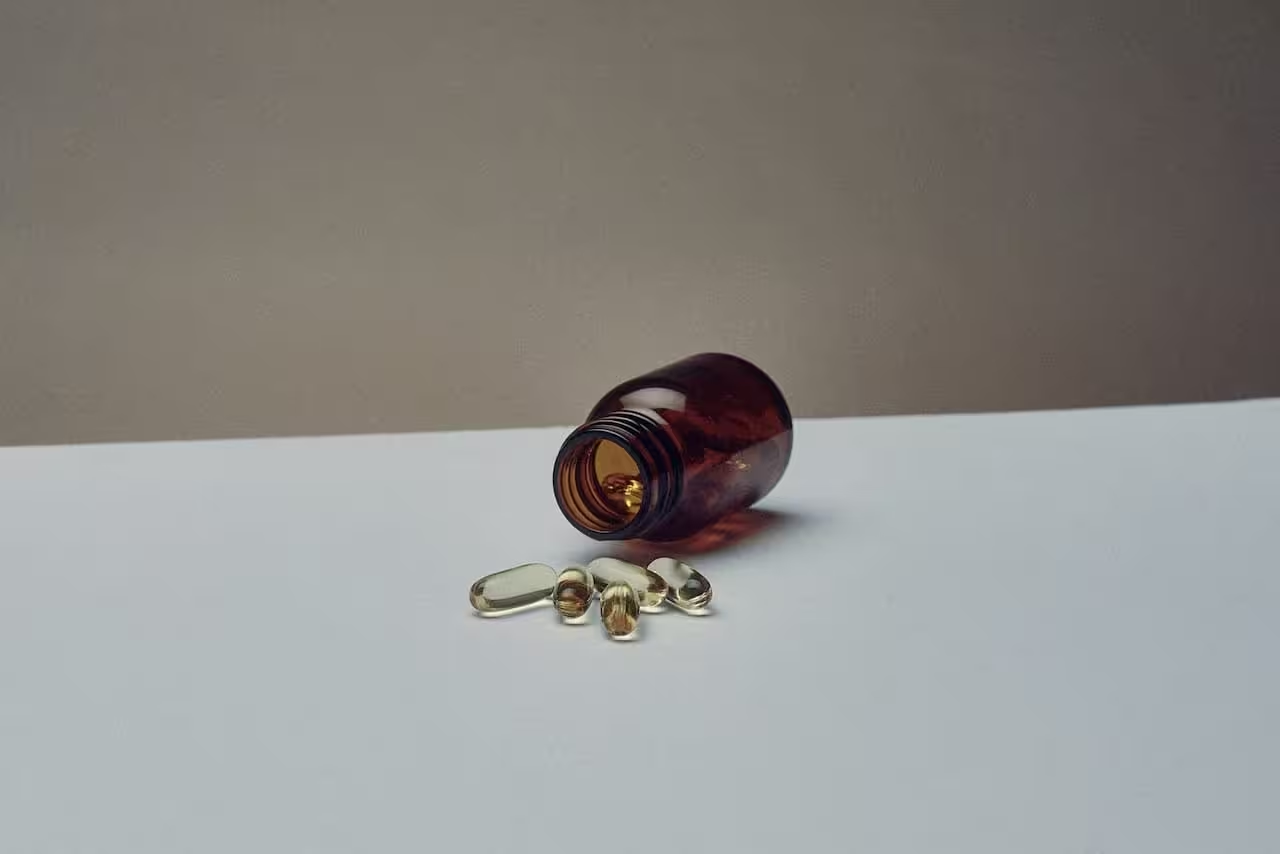

A Guide to Yeast Infection Treatment Options
Yeast infection treatment options include prescription, OTC, and at-home remedies. Learn how to treat Candida infections effectively.
Words by Olivia Cassano
Scientifically edited by Dr. Krystal Thomas-White, PhD
Medically reviewed by Dr. Christine Vo, MD
If you have a vagina, chances are you’ve heard of yeast infections — or even had one. Up to 75% of women will get a vaginal yeast infection at least once, making them an extremely common condition.
Although they’re almost a universal experience for women and people with vaginas, the treatment options for yeast infections aren’t always one-size-fits-all.
Keep reading to learn more about what causes a yeast infection, how to spot the signs, and, more importantly, the different treatment options available.
Understanding what causes vaginal yeast infections
Vaginal candidiasis, a common condition caused by Candida overgrowth, leads to vaginal yeast infections. The Candida fungus naturally lives on our skin and in other areas of the body, including the mouth, throat, and vagina. Though Candida can present in the vaginal microbiome of healthy people, sometimes it overgrows and triggers unpleasant symptoms, such as:
- Odorless vaginal discharge that is white, thick, and resembles cottage cheese
- Vaginal itching
- A burning sensation when you pee.
Most yeast infections are caused by a type of yeast called Candida albicans (C. albicans), but other strains can overgrow, too. These include Candida glabrata (C. glabrata), C. tropicalis, C. parapsilosis, and C. krusei, among others. The type of strain is important because it will determine what’s the best treatment option for you.
How to treat a vaginal yeast infection
Vaginal yeast infections can be anything from rare and harmless to chronic and severe. But given how common they are, it’s important to understand how to treat them, especially since they have a nasty habit of resisting treatment or showing up again. Both prescription and over-the-counter vaginal yeast infection medications are available for treatment.
Because vaginal yeast infections are caused by a fungus, antifungal medication is the go-to way to get rid of a yeast infection. Both prescription and over-the-counter treatment can come in the form of vaginal creams or oral medications.
The dosage, length, and efficacy of treatment will also depend on what strain is causing the yeast infection, how bad your symptoms are, and your overall health. This means your doctor might recommend different types of treatment, like a longer or stronger dose, or to take different treatments together.
Antifungal medications are designed to kill yeast, but sometimes they can also kill other bacteria, including healthy ones. Unfortunately, very few studies have looked into how antifungals impact the vaginal microbiome, so very little is known about their effects on the good bacteria that might live there.
Before we get into specific treatment options for vaginal yeast infections, we’ll stress once again the importance of testing and getting an accurate diagnosis before pursuing any treatment (even something as innocuous as a drugstore remedy). To get the best, most effective treatment for whatever is happening in your vaginal microbiome, you and your healthcare provider need to have an understanding of what’s happening microbially in your vagina. Mild yeast infections can often be treated with over-the-counter medications.
This is where an Evvy Vaginal Health Test can be helpful. We’ve created the first-ever platform for vaginal healthcare that combines state-of-the-art vaginal microbiome testing, prescription treatment, and 1:1 coaching to get you the answers, relief, and support that you deserve. Built with leading OB-GYNs and researchers, Evvy’s care platform can connect you to providers trained to review your vaginal microbiome results and select the best antifungal to decrease your specific strains of Candida (including ones that aren’t often tested for at the doctor’s office.) They’ll also recommend research-backed supplements to build back your microbiome to a protective state.

Recurrent symptoms? Get Evvy's at-home vaginal microbiome test, designed by leading OB-GYNs.
Prescription vs OTC yeast infection treatment options
OTC treatments for yeast infections
Clotrimazole
Brand names: Gyne-Lotrimin, Mycelex
Type of medication: Antifungal agent
Administration route: intravaginal (cream applied vaginally)
Clotrimazole is an antifungal medication used to treat yeast infections throughout the body. Fun fact: it’s also used to treat the yeast that causes athlete's foot.
You can buy clotrimazole under many different brand names, but most of them come in the form of a vaginal cream you insert with an applicator. The Centers for Disease Control and Prevention (CDC) recommends using either 5g of 1% cream intravaginally for 7-14 days, or 5g of the 2% cream for three days.
It’s also recommended to avoid sexual intercourse when using clotrimazole as it may interfere with spermicides and the stability of condoms, but then again, you’re probably not going to be in the mood for sex if you’re dealing with the gnarly yeast infection symptoms.
It’s unclear whether clotrimazole can be harmful to the vaginal microbiome. Some studies show that the drug is formulated with Lactobacillus probiotic supplements, so we can assume that it doesn’t hurt lactobacilli levels in your vaginal microbiome.
Miconazole
Brand name: Monistat, Vagistat, and others
Type of medication: Antifungal agent
Administration route: intravaginal (cream or suppository applied vaginally)
Miconazole — or Monistat, as most of us know it — is another antifungal that has been used for quite a long time (it was FDA-approved in the 1970s). Similarly to clotrimazole, it’s also used to treat other fungal infections like ringworm, athlete's foot, and jock itch.
Miconazole can come as either a cream or a suppository. The CDC recommends using any of the following vaginal preparations:
- 5g of 2% vaginal cream for seven days
- 5g of 4% vaginal cream for three days
- 100mg suppository daily for seven days
- 200mg suppository daily for three days
- 1,200mg suppository for one day.
Tioconazole
Brand name: Trosyd, Gyno-trosyd
Type of medication: Antifungal agent
Administration route: intravaginal (cream applied internally)
Tioconazole is also used to treat fungal infections throughout the body (like ringworm, athlete’s foot, and jock itch). For treating vaginal yeast infections, it comes as an ointment that is applied vaginally. The CDC recommends using 5g of 6.5% ointment intravaginally for one day.
In an older study from the 1990s, tioconazole was moderately effective at killing BV-associated bacteria Gardnerella, Mobiluncus, and Prevotella, while Lactobacillus species were resistant. Although more research is needed, it seems as though tioconazole isn’t harmful to the vaginal microbiome.
Boric acid
Boric acid is an alternative therapy that has become more and more popular for treating vaginal infections in recent years. It’s a white powder made from borax, a naturally occurring mineral that is composed of the elements boron, hydrogen, and oxygen.
It has antimicrobial and antifungal properties and existing research suggests it’s quite good at treating vaginal yeast infections, especially when antifungals have failed, or a vaginal yeast infection keeps coming back.
Research suggests that boric acid is as effective as traditional antifungal medications in treating yeast infections. In some cases, it may be more effective than standard first-line treatment, especially when an atypical Candida species is at play.
The CDC guidelines recommend 600 mg of boric acid in a gelatin capsule administered vaginally once daily for three weeks for recurrent yeast infections not caused by C. albicans. However, there needs to be more research on the effectiveness of boric acid on all types of Candida.
While the early evidence is encouraging, boric acid is not a one-size-fits-all solution. It’s important to consult your OB-GYN or healthcare provider before starting treatment, especially if you’re dealing with ongoing symptoms or have underlying health conditions.
For gentle, targeted support, Evvy’s Pure Boric Acid Suppositories are designed to help restore vaginal balance, especially when you need a reliable option for recurring infections.
At-home treatments for yeast infections
You may have read online that at-home remedies like yogurt, garlic, and tea tree oil can clear up a yeast infection, but there’s no evidence. They may even do more harm than good. As frustrating as it is to deal with a stubborn yeast infection, it’s safest to stick to the recommended treatment plans. Save the yogurt for your morning granola!
Prescription treatment for yeast infections
Butoconazole
Brand name: Gynazole-1, Mycelex-3
Type of medication: Antifungal agent
Administration route: intravaginal (cream applied vaginally)
Butoconazole is an antifungal used to treat vaginal yeast infections, but sometimes it’s prescribed to treat other infections too. It comes in the form of a vaginal cream applied with an applicator. It usually comes in a single dose, and the CDC recommends using 5g of the 2% cream intravaginally for one day.
Terconazole
Brand name: Terazol 3, Terazol 7, Zazole
Type of medication: Antifungal agent
Administration route: intravaginal (cream applied vaginally)
Terconazole is an antifungal cream that is applied in the vagina. The CDC recommends using any of the following formulations:
- 5g of the 0.4% cream intravaginally for 7 days
- 5g of the 0.8% cream for 3 days
- 80mg of the vaginal suppository daily for 3 days
Fluconazole
Brand name: Diflucan
Type of medication: Antifungal agent
Administration route: oral medication (pills taken by mouth)
Fluconazole is a commonly used prescription antifungal used to treat a wide range of fungal infections in the body, including some really serious ones. It’s also used to prevent fungal infections in people undergoing bone marrow transplants and other cancer treatments.
Unlike the other yeast infection treatments on this list, fluconazole is taken orally, so it will have a systemic effect (meaning it can kill fungi throughout the body). The CDC recommends taking a single 150mg oral dose, and it’s not recommended if you’re pregnant.
Can you use hydrocortisone cream for yeast infections?
Hydrocortisone cream can help relieve external vulvar itching and inflammation caused by a vaginal yeast infection, but it doesn’t treat the infection itself. It should not be used inside the vagina, as it’s not formulated for internal use and won’t address the underlying fungal overgrowth. For internal symptoms, antifungal treatments are necessary.
For safe, targeted relief of external discomfort, Evvy’s Anti-Itch Vulva Cream is designed specifically for the vulva and can be a gentle, effective option alongside antifungal treatment. Always talk to your doctor if symptoms persist or worsen.
Not every itch is a yeast infection
Although most people with a vagina will experience a yeast infection at one point or another, that doesn’t mean we’re good at telling the difference between a yeast infection and other vaginal conditions — which often have similar symptoms.
In one study, only around one-third of folks self-diagnosed their vaginal yeast infection correctly. Another analysis found that 74% were incorrect in self-diagnosing a vaginal yeast infection.
You get the idea — it’s hard to know what’s going on in your vaginal microbiome from symptoms alone! Taking treatment for the wrong type of fungus strain might also explain why your yeast infection keeps coming back.
Evvy’s at-home vaginal microbiome test gives you the most reliable, comprehensive results, as well as a custom plan of clear next steps. For eligible tests, we also offer integrative, prescription treatment programs.
FAQ
What is the fastest way to get rid of a yeast infection?
The quickest way to clear up a yeast infection usually involves using antifungal medications, like vaginal creams, ointments, suppositories, or oral tablets. You can find over-the-counter options such as clotrimazole (Gyne-Lotrimin) and miconazole (Monistat) to apply directly to the vagina for one to seven days. For more stubborn yeast infections, your healthcare provider might suggest a single-dose oral antifungal medication like fluconazole (Diflucan). Remember to complete the full treatment, even if you start feeling better, to make sure the infection is fully gone. Along with medication, wearing loose, breathable clothing and avoiding irritants like scented hygiene products can help ease symptoms and prevent future infections. It's always a good idea to talk to a healthcare provider for proper diagnosis and treatment, especially if it's your first time dealing with this or you have recurrent yeast infections.
What yeast infection treatment is the best?
The best treatment for a yeast infection depends on the severity of the infection, individual preferences, and any underlying health conditions. A mild yeast infection might clear up with OTC vaginal creams such as Monistat, while a severe infection may need a longer course of prescription antifungal medications. How effective a treatment is can also depend on the specific Candida strain causing the yeast infection.
What is commonly mistaken for a yeast infection?
Many other conditions and vaginal infections have vaginal symptoms similar to a yeast infection. Bacterial vaginosis, which can cause a thin, grayish vaginal discharge with a fishy odor, is often mistaken for a yeast infection. Additionally, sexually transmitted infections like trichomoniasis, chlamydia, and gonorrhea can have similar symptoms. Even skin conditions like contact dermatitis or eczema in the genital area can cause itching and irritation similar to a yeast infection. It's really important to see a healthcare provider for an accurate diagnosis and to make sure you get the right treatment.





